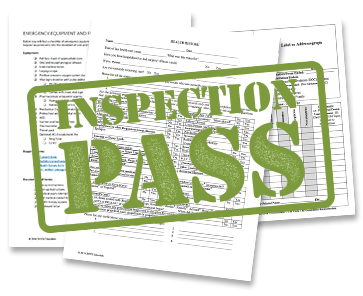
As DOCS Education celebrates our 25th anniversary of helping dentists learn and provide safe sedation to their respective communities, we wanted to highlight the top 25 Safety Statements created by our esteemed faculty. Below are the first 10, created by our very own Leslie Fang, M.D., Ph.D., Medical Director of DOCS.
Adhering to these practices aligns with regulatory requirements and significantly enhances dental practices' capacity to manage emergencies effectively, thereby safeguarding patient safety.
1. You Don’t Know If You Don’t Ask: Safety Starts with a Comprehensive Medical History
Enhancing Sedation Safety: Ensuring safety during sedation necessitates a thorough assessment of the patient's medical history and a detailed review of all medications being taken. It is essential to include the date of the patient's most recent medical examination as part of this assessment. If a patient has not consulted their primary healthcare provider within a specified timeframe, referring them for a medical evaluation before scheduling any sedation procedures is advisable. The frequency of medical follow-ups should be customized based on the patient's age and the complexity of their health issues. This is particularly crucial for patients with complex medical conditions, who may require more frequent assessments. Furthermore, a comprehensive evaluation should also include a detailed inventory of all prescribed and over-the-counter medications, as well as any nutraceuticals and supplements the patient may be using. This is essential to establish a comprehensive safety protocol.
2. Navigating Drug Interactions for Safer Healthcare

Optimizing Management of Drug-Drug Interactions: Mastery in identifying and managing drug-drug interactions is critical to prevent potential adverse effects stemming from incompatible medication combinations. A comprehensive documentation of all medications—including prescribed, over-the-counter drugs, nutraceuticals, and supplements—and dietary habits is essential for ensuring patient safety during sedation. Even routine consumption of substances like grapefruit juice can significantly alter the pharmacokinetics of certain sedatives, highlighting the complexity of metabolic interactions. It is strongly advised for practitioners involved in sedation to utilize drug interaction software, such as Lexicomp, to assess and record potential medication interactions meticulously. Based on this assessment, it may be necessary to modify the patient's current medication regimen or to consider alternative sedation strategies to mitigate the risk of adverse reactions.
3. Decoding Patient Health Through Medical Complexity
Analyzing Patient Health Complexity Through Medication Regimens: The quantity and nature of medications prescribed to patients frequently indicate the severity of their medical conditions and the complexity of their health management. Often, the comprehensive list of a patient's medications provides more substantial insights into their health status than self-reported patient information, underscoring the necessity of an integrated safety evaluation. Utilizing digital pharmacological resources, such as Lexicomp, for detailed analysis of each medication enables healthcare providers to uncover significant information related to systemic diseases. It is advisable to engage in further dialogue with the patient to gather additional health information and to consult with their primary healthcare provider when indicated for an exhaustive understanding of the patient's health, particularly before scheduling procedures that require sedation.
4. Unveiling the Rule of 4 Identifying Patients Requiring Special Scrutiny

Evaluating High-Risk Patients Using the "Rule of 4": The "Rule of 4" is an essential criterion for identifying patients necessitating increased clinical scrutiny. This rule posits that patients prescribed four or more medications for managing a single health condition warrant a thorough examination, as this often indicates challenges in controlling the underlying disease. Such difficulty in disease management may significantly elevate the risk associated with sedation, rendering an uncontrolled condition a clear contraindication for sedation procedures. Conducting an in-depth analysis of each medication—including consultation with the prescribing physician if the medication list is extensive—and understanding its primary therapeutic use allows for accurately identifying the treated condition. Furthermore, laboratory tests, such as Hemoglobin A1c (HbA1c) levels for diabetes, can provide objective evidence of disease control, facilitating the application of a tailored sedation protocol that aligns with the specific requirements of the patient's condition.
5. Balancing Sedation and The Top 3 Medical Conditions
Prevalent Health Conditions Among Patients Seeking Sedation: Hypertension, cardiovascular diseases, and diabetes mellitus frequently characterize the medical profiles of older individuals undergoing sedation. Patients with well-managed hypertension and stable cardiovascular conditions can often undergo sedation with a reduced risk of adverse cardiac events. The relaxation induced by sedation may contribute to decreased cardiac workload, lowered blood pressure, and a diminished adrenal response to stress and anxiety. In the context of diabetes mellitus, meticulous oral health care is crucial for mitigating fluctuations in blood glucose levels. Consequently, patients with well-controlled diabetes are considered suitable candidates for sedation and can greatly benefit diabetically from improved oral health, provided their metabolic condition is adequately managed. Comprehensive collection and analysis of medical history, augmented by diligent research into each patient's health status, are indispensable for conducting thorough patient evaluations before sedation.
6. Unveiling the Impact of Hypertension: A Common Encounter for Dentists
Epidemiology of Hypertension in the United States: Hypertension is a significant public health issue, affecting approximately 73 million adults in the United States, representing about one-third of the adult population. Moreover, nearly 30% of the population is dealing with pre-hypertension, indicating a widespread prevalence of this condition across various demographics. This prevalence underscores the necessity for dental practitioners to consider hypertension as a common concern during patient evaluations. All patients must undergo blood pressure screening before administering any anesthetic agents, including sedation. Establishing a baseline blood pressure is crucial for practitioners to determine if a patient's intraoperative blood pressure remains within a safe range, facilitating appropriate management strategies.
Blood Pressure and Cardiac Risk Association: Establishing the benchmark for normal blood pressure at 120/80 mm Hg, it has been observed that every 10 mm Hg increase in diastolic pressure or a 20 mm Hg increase in systolic pressure can double the risk of cardiac mortality. This correlation highlights the critical importance of meticulous blood pressure management in clinical settings to mitigate the risk of cardiovascular complications.
7. Monitoring Vital Signs During Sedation Ensuring Safety and Wellbeing

Ensuring Patient Safety Through Vigilant Monitoring: To prevent potential emergencies during sedation procedures, it is crucial to continually monitor vital signs to gauge the patient's physiological response to sedation accurately. These vital signs include metrics of oxygenation, ventilation, circulation, body temperature, and the patient's level of consciousness. Employing a medical-grade monitor that adheres to the established standards of care is essential for accurate and reliable measurements.
Baseline vital sign measurements should be established before the initiation of sedation to serve as a reference for detecting any significant deviations during the procedure. It is recommended to meticulously track and document specific parameters—namely Pulse, SpO2 (oxygen saturation), NiBP (non-invasive blood pressure), EtCO2 (end-tidal carbon dioxide), and ECG (electrocardiogram)—at five-minute intervals throughout the sedation process. Additionally, the patient’s level of consciousness should be evaluated at the same frequency to ensure that the depth of sedation remains within the desired range.
The presence of a well-trained assistant is paramount to facilitate effective monitoring and ensure precise documentation of all observations. This approach aligns with the safety guideline that patients should never be left unattended during sedation, emphasizing the necessity for continuous supervision by a trained professional.
8. Navigating Sedation Dentistry for Patients Over 65 (Special Considerations)
Prioritizing Safety in Age-Related Considerations for Sedation Dentistry: The Significance of Age in Sedation Dentistry Decision-Making: Age plays a pivotal role in considering sedation dentistry, with individuals aged 65 and older requiring enhanced scrutiny. A higher prevalence of chronic medical conditions, including hypertension, hyperlipidemia, diabetes, cardiovascular diseases, and vascular disorders, characterizes this demographic. Additionally, there may be a decline in upper airway reflexes, raising concerns about the potential for respiratory compromise during dental procedures.
Aging is associated with physiological changes that affect drug metabolism, leading to an increased sensitivity to anesthetics. These changes necessitate adjustments in medication dosing and underscore the importance of meticulous monitoring during sedation.
While it is critical to recognize that not all patients over 65 are automatically precluded from undergoing sedation dentistry, the presence of multiple co-morbidities within this age group can introduce complexities in managing dental treatments. To optimize patient safety, it is advisable to consider reducing the dosage of sedation medications by approximately half for older adults. This conservative approach aligns with the overarching objective of prioritizing patient health and safety.
9. Patient Unattended – Always Have a Trained Monitor.
The Goals of Monitoring: Assessment of Consciousness in Sedation: Accurate assessment of a patient's level of consciousness is essential for determining the appropriate level of sedation. A patient who responds to verbal cues with clear cognition is considered to be under minimal sedation, also known as anxiolysis. Conversely, a patient who can respond purposefully to verbal or tactile stimulation is in a state of moderate sedation, often called conscious sedation. Patients receiving sedation through enteral or intravenous (IV) methods should ideally be maintained at one of these levels to ensure safety and efficacy.
Monitoring of Physiological Parameters: Continuous monitoring of four critical physiological parameters is imperative during sedation, especially when the patient is in the dental chair. These parameters are heart rate, blood pressure, oxygen saturation (SpO2), and end-tidal carbon dioxide (EtCO2) levels.
However, the mere application of monitoring equipment is insufficient for ensuring patient safety. A trained team member must always be present to observe and document these physiological readings. This individual must possess the knowledge and skills to interpret the data accurately and to initiate or suggest appropriate interventions when readings deviate from acceptable ranges. The role of a trained monitor is becoming increasingly recognized, with many jurisdictions now mandating the presence of such a professional during sedation procedures, underscoring the importance of formal training in this area (for further details, consulting with DOCS Education’s course advisors is recommended).
10. Running Test Codes
Optimizing Outcomes through Preparedness for Rare Events: The most effective strategy for preparing for infrequent yet critical events is to engage in regular, realistic simulation drills.
Increasingly, jurisdictions are mandating that dental practices, especially those offering sedation and anesthesia services, maintain comprehensive records of medical emergency simulations. These records are subject to review during inspections. Policies and procedures within sedation dental practices must encompass the following documentation as a fundamental requirement:
- Detailed protocols for managing sedation/anesthesia emergencies, emphasizing advanced airway management techniques to ensure immediate and effective response.
- A training log for staff, recording annual training sessions focused on preventing, recognizing, and managing emergencies. This ensures that all team members are continuously updated on the latest practices and are prepared to act efficiently.
- An emergency drug log must be reviewed annually to verify that all emergency medications are within their expiration dates and ready for use. This is crucial for ensuring that drugs are effective when needed.
- An equipment readiness log, also reviewed annually, to confirm the operational status of all essential equipment. This guarantees that equipment is functional and available for emergency scenarios.
- Documentation outlining the roles and responsibilities of office staff during emergencies, particularly attention to responses to respiratory emergencies. This clarity in roles ensures a coordinated and swift response to emergencies.
DOCS has two incredible products that can help with this.

Sedation Dentistry Guidebook: This is a powerful tool for launching and optimizing the sedation portion of your practice. It was designed for both new and experienced sedation dentists. Using the Guidebook as directed will create more time and opportunities for you to do high-value patient work. The Guidebook is delivered in digital form and is updated 4x per year.

Inspection Pass: This comprehensive series of easy-to-use drills, detailed checklists, and step-by-step instructions guide dental offices to quickly prepare and pass the state-mandated office inspection for sedation certification. The InspectionPass is designed to help offices not just pass—but ace—a dental board inspection the first time. Inspections are intended to ensure you comply with the regulations created to foster patient safety.
Stay tuned for our next set of "Safety Statements" as we continue to celebrate 25 years of adherence to the highest safety and efficiency standards.
If you're not yet subscribed to receive the Incisor newsletter, filled with cutting-edge dental news sent directly to your inbox twice a month, you can do so here.




